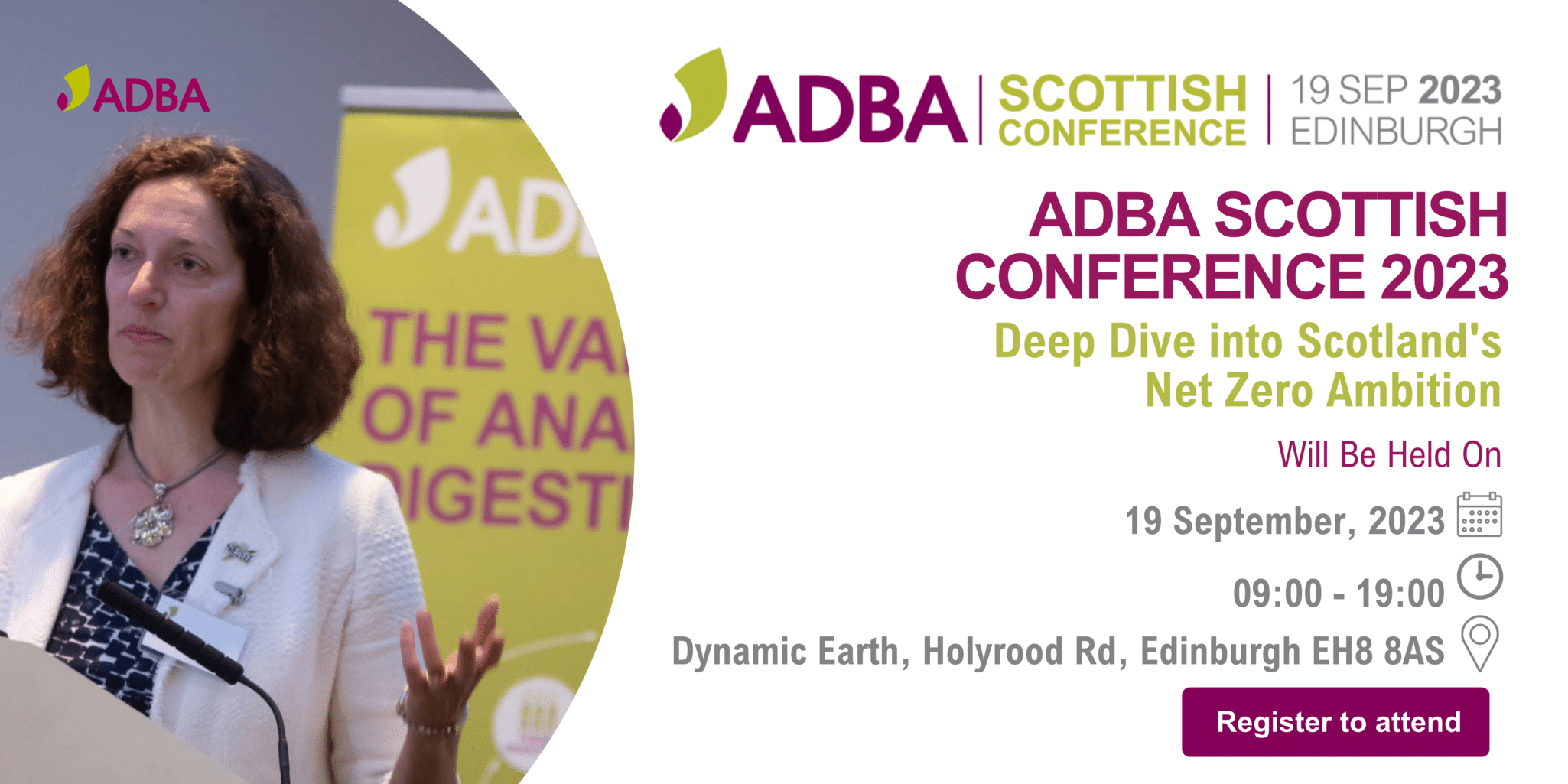The Environment Agency has updated its Resource Frameworks guidance, which will affect digestate management from…
Anaerobic digestion – the renewable technology of 2010/11
ADBA PRESS RELEASE
The Anaerobic Digestion and Biogas Association (ADBA) is holding the UK’s first stand alone trade show on anaerobic digestion (AD), UK AD & Biogas 2010, at the NEC on 7 and 8 July, showcasing over 70 exhibitors from both the UK and Europe covering the entire industry from constructors, plant operators and tank builders through to seed producers, gas grid connectors, consultants and training providers.
This two-day trade show includes an exciting programme of free seminars, workshops and case studies covering all aspects of AD, plus a high-profile conference looking at The Future of the AD Industry in the UK. Government representatives and leading industry experts will present and debate the future direction of the industry, including what is being done and has to be done to pave the way for decarbonised gas grids in the UK. Issues ranging from feedstocks, collection and use of municipal and food waste, co-digestion, grid injection, biofuels, finance and many more will be discussed by expert speakers ranging from Defra’s Waste Strategy Team, WRAP, Ofgem, the EA, Lord Oxburgh, Sita, British Gas, Severn Trent Water, Lloyds Banking Group, The Cooperative Bank and many more.
Anaerobic digestion is the only renewable specifically mentioned in the Coalition Agreement, in which the new government committed to introduce measures to promote “a huge increase in energy from waste through anaerobic digestion”. This commitment has drawn considerable attention to what has to date been a relatively unknown industry in the UK, where there are currently fewer than 20 plants outside the water industry. AD offers a unique opportunity for Britain to generate its own green gas supply, improve energy security, reduce carbon emissions and create jobs.
The government’s target for renewable energy from AD means building two plants every week for the next 10 years, to around 1,000 plants by 2020 producing 20% of Britain’s domestic gas supply, 10% of its entire energy needs. A formidable undertaking, it is achievable with the right support, as has been shown on the continent where there are over 5,000 plants operating in Germany alone. The cost of building this AD infrastructure will be between £2bn and £5bn, which will be financed by the private sector. The biogas generated will be worth over £2bn a year at today’s prices. The industry itself will employ over 20,000 people.
Unknown to most, anaerobic digestion plants have in fact been operational for a very long time in the UK, with around 500 in the water sector. An extremely simple technology, AD plants can fit onto small industrial sites and on farms. 75% of all AD plants will be on farms, turning such things as cattle and other animal slurries, waste from vegetable production and break crops such as maize and wheat into biogas. The biogas can be burned to generate electricity and heat for use on the farm itself or injected into the electricity grid, or cleaned and compressed for use as a transport fuel for the farm’s own use or injected into the gas grid.
The balance of the plants will be merchant plants, processing waste from food manufacturing and processing, or municipal plants acting as an integral part of councils’ waste strategies, dealing with kitchen waste from kerbside collections and commercial food waste.
AD plants will be built in every constituency, so planning, waste and transport strategies will need to be reviewed and local councillors on planning committees will need to familiarise themselves with AD plants because there will soon be a flood of applications for planning permission.
What will this mean for those working in the food waste environment? Lord Redesdale, ADBA chairman, the trade body representing the industry in the UK, recently said:
The emphasis on AD is the only way the government will meet its landfill directive targets. Without AD it is almost certain that renewable energy and climate change targets will not be met either.
Also, pressure from the European Union could well see organic waste being directed away from combustion towards AD because of the potential value of digestate.
It is estimated that there are 100 million tons of organic material produced in the UK each year, of which 70 million tons is probably useable. This includes roughly 7 million tons of food waste each year. Although there is much the country could do to reduce the profligate wastage of use by consumers, the majority of waste organic material from the food industry is produced in the production process.
For farmers, new technology could mean that slurry tanks, which at the moment are a financial liability, could well become a financial asset to any farm in the near future. The methane given off from slurry, which could also be enhanced by enriching the process with feedstocks such as maize and food waste, mean that farmers could well have energy companies bidding for the gas that they are producing which at present is just venting into the atmosphere.
The biogas produced from AD could be either burned to generate electricity and the heat biproduct used to dry the digestate for use as a biofertiliser, or injected into the national or a localised gas grid. The value of the gas could then be enhanced by a trading system in low carbon green gas. With the government introducing a new financial subsidy, the Renewable Heat Incentive (RHI), the process should spur the energy companies into a dash for biogas bidding with each other to secure a gas supply from farmers. The North Sea gas fields to an extent would be replaced by gas from farmers’ fields.



